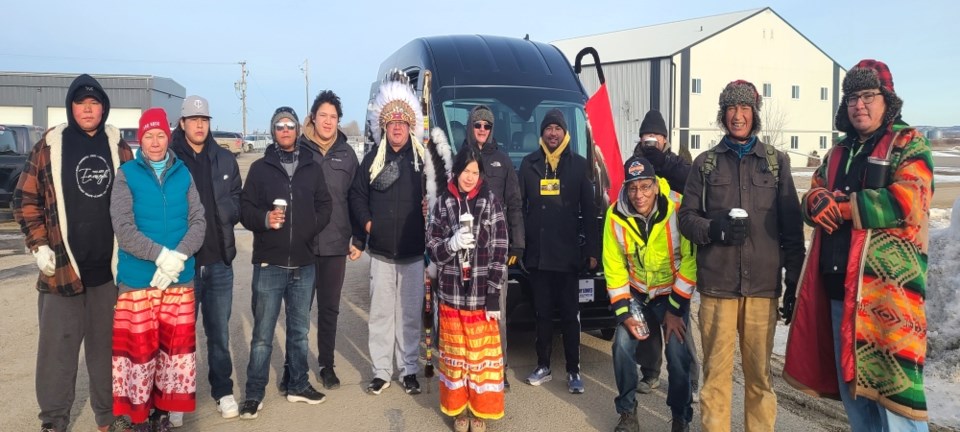PHEASANT RUMP NAKOTA FIRST NATION - On March 21, 1901, Pheasant Rump Nakota First Nation (PRNFN) people were removed from their land by gunpoint and forced to go east to White Bear First Nation (WBFN).
They left their land with the clothing on their backs and told to leave their belongings behind. Pheasant Rump is located north of Kisbey off of Highway 13, but back in 1901 there were no roads to travel on.
Walking through the base of the Moose Mountain in the cold temperatures took a toll on the people, as they carried babies and helped the elderly, and many lost their lives on this journey.
They continued to fight for their land and in 1990 were reconstituted as an independent band.
Vanessa BigEagle, who is PRNFN’s language and cultural media consultant, said they wanted to honour their ancestors on March 21.
PRNFN Chief Ira McArthur went to the WBFN at 6 a.m. and was joined by Chief Jonathan Pasap to walk the 44 kilometres to Pheasant Rump. McArthur said they had not intended to do the walk, but some like-minded people thought it would be the best way to honour their ancestors and to know a little of what they went through on this journey.
The journey started with 12 people. Two of them, Mason McArthur and Karra Pasap, never took a break through the walk, and they fasted the whole time, only drinking water. This is how it was done in 1901. They had no food or shelter, and the journey took them four days.
Wynette McArthur BigEagle carried on her back a cradle board, which was used to hold infants.
Their journey took them south on Highway 9 to Carlyle and then west on Highway 13 until they reached Pheasant Rump, where they walked the street to the complex.
The group grew with people who joined the walk, with a lead vehicle for safety and several following for those that needed a rest.
Pasap was honoured to take part in the journey, as he thought it gave people an idea of what they endured through these challenging times.
McArthur said although he feels he is in average physical condition, the walk took a toll on him, and he was exhausted when it was completed.
Ocean Man First Nation’s (OMFN) Chief Connie BigEagle was unable to attend due to a family issue, but OMFN was also part of this trauma in 1901.
With the walk taking ten hours to complete, this created a delay with the events planned for the afternoon.
Over the years, there have been difficulties between the first nations and this day was to move beyond this, and to commemorate and remember the sacrifices of their ancestors by honouring their people.
“The walk was inspirational,” said McArthur. “We are losing our elderly people and this way we can continue to tell the story to the young.”
Although things were delayed, they began the event with the pipe ceremony and then the feast was prepared.
More than 100 years ago, the women cooked the meal, and the men served it, and this is the tradition they did on this day.
The meal was set out on tarps in the middle of the complex, and then selected young men danced around the feast with a ladle in hand, serving the guests.
The celebration of the nations went on into the late evening with a gahomni, which is special dance in a circle, and later an evening lunch.
McArthur said this has brought the communities together after much trauma, and through this all, they work on healing.



